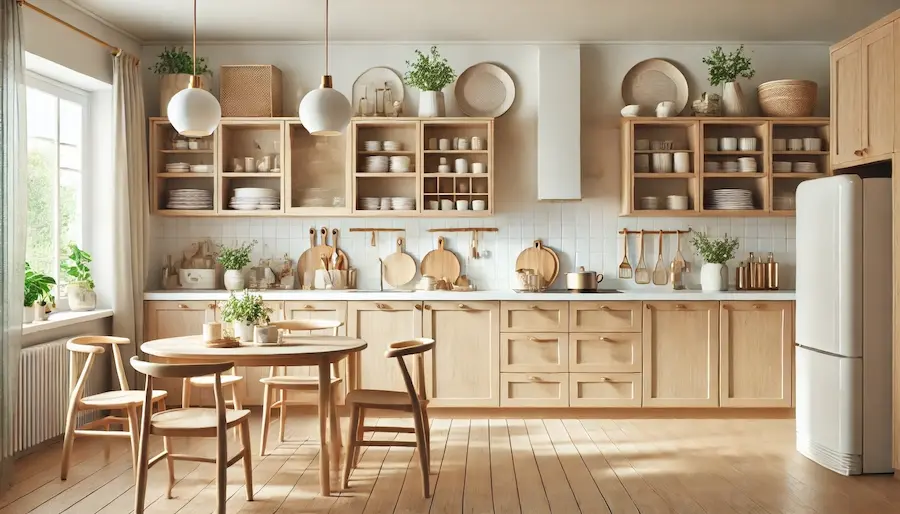A Scandinavian kitchen embodies simplicity, functionality, and a deep connection to nature, reflecting the core principles of Nordic design. This article explores the history, key features, applications, and considerations for creating a Scandinavian-inspired kitchen.
History and Origins of Scandinavian Kitchens
The roots of Scandinavian design can be traced back to the early 20th century, with a significant evolution during the post-World War II era known as the “Golden Age” of Scandinavian design (1940s-1960s). During this time, designers emphasized functionality, simplicity, and accessibility, aligning with the ideals of the Scandinavian welfare state. This period saw the creation of iconic designs that have influenced modern interiors worldwide.
Key Features of Scandinavian Kitchens
- Neutral Color Palette: Scandinavian kitchens typically feature soft, neutral colors such as whites, grays, and subtle blues, creating a bright and airy atmosphere.
- Natural Materials: The use of natural materials like wood, stone, and glass adds warmth and texture, fostering a connection to nature.
- Functional Design: Emphasis on practicality with sleek, clean-lined furniture and innovative storage solutions to maintain an uncluttered space.
- Maximized Natural Light: Large windows and minimal window treatments are used to harness natural light, essential during long Nordic winters.
- Minimalist Aesthetics: A focus on simplicity and minimalism, avoiding unnecessary ornamentation to create a serene environment.
Applications of Scandinavian Kitchens
- Residential Homes: Scandinavian kitchens are popular in homes seeking a minimalist yet cozy atmosphere, promoting functionality and comfort.
- Open-Concept Spaces: The design complements open floor plans, seamlessly integrating the kitchen with living and dining areas.
- Small Apartments: The emphasis on light colors and efficient use of space makes Scandinavian kitchens ideal for smaller living areas, creating an illusion of spaciousness.
Considerations When Designing a Scandinavian Kitchen
- Material Selection: Opt for sustainable, high-quality materials that enhance the natural aesthetic and ensure durability.
- Lighting: Incorporate a combination of natural and artificial lighting to maintain a bright and welcoming environment.
- Storage Solutions: Implement smart storage to keep the space organized and clutter-free, maintaining the minimalist appeal.
- Personal Touches: While maintaining simplicity, add personal elements like plants or handcrafted items to infuse warmth and character.
Conclusion
Scandinavian kitchen design offers a timeless blend of functionality, simplicity, and natural beauty. By embracing its key principles and thoughtfully considering design elements, you can create a kitchen space that is both practical and inviting, embodying the essence of Nordic living.
